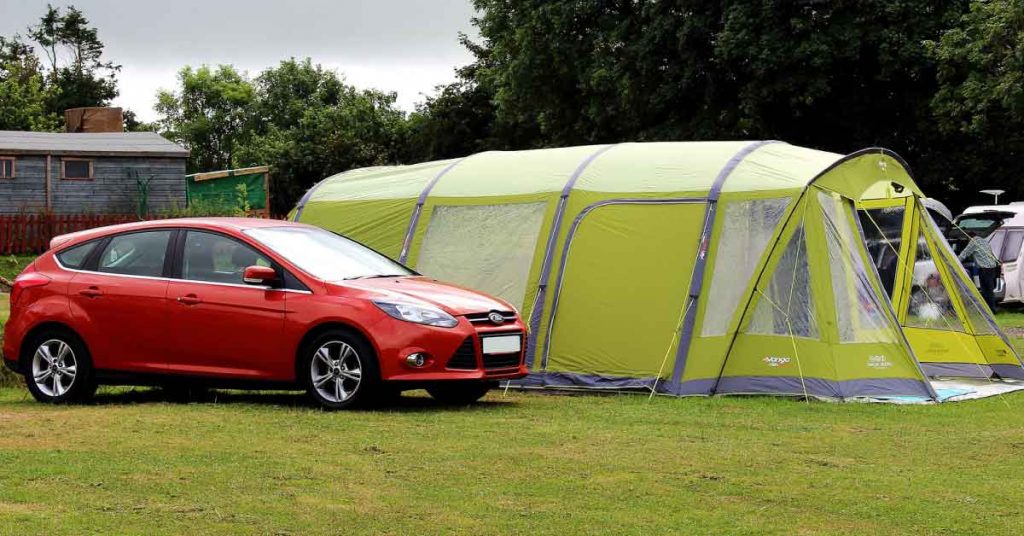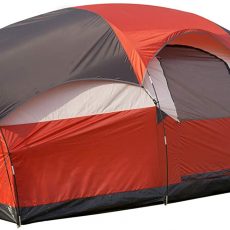After getting cooped up in the home through no fault of your own, nothing seems as refreshing as having some time out in the outdoors. And it’s not just at the local park, you’ll want to get away from civilization for some time.
This calls for a camping session, the problem is, you have no idea what to look for in a tent. Here are the most important things to look for on how to choose a tent for your family.

How many people would you like your tent to house?
There are a few considerations when choosing a tent, but by far the most important is size. How many people who will be in the tent (and don’t forget to count pets!)?
Think about the sleeping arrangements of your family – do you need double mattresses or singles? Does the dog need his own bed? Is there a baby that needs a travel cot?
It’s a good idea to set expectations with your family regarding the size of the tent. Unless you buy a very large tent, chances are each member of the family won’t have their own room like they do at home. They might also need to pack conservatively to make sure there is enough space in the tent to fit all the gear as well as the beds.
It’s also useful to think about what you might be doing in the tent. If you’ll be spending time in there (because it is cold outside) you’ll probably want a tent you can stand up in. If you feel claustrophobic in small spaces you’ll also want a bigger tent, and probably one with lighter fabric so it isn’t as dark.
Tents are often labelled as “4-man” or “6-man” but that doesn’t necessarily mean you want that many people in there. A 4-man tent is usually a tent that 4 people can fit in, side by side, with no gear included. Because of this, we always recommend you go up to a size bigger than the actual number of people you want to put in the tent (for example you might buy a 6 or 8-man tent for a family of four).

What will the weather be like when you are camping?
The different seasons experienced in various parts of the country means you have to consider when you will be camping and how cold or hot it will be. Tents can be made to serve you well in three seasons, and there are others that can withstand the brutish winters in your area.
Three season tents tend to be light and breathable, making them suitable for camping in spring, summer and early fall. Extended 3 season tents are sturdier and designed to retain warmth in late fall.
Four-season tents tend to be heavier and bulkier. They can withstand the huffing and puffing of mother nature as well as the load of her frozen perspiration. These tents tend to be more expensive and have rounded roofs.
Tents for warmer climates are generally lighter and easier to put up on your own. Tents for colder camping are generally made of much thicker (and therefore heavier) canvas and need heavier, sturdier poles to hold them up.
You’d hope your tent is waterproof as well (all new ones are – but material degrades over time which affects the ability to keep the water out). If it is raining, make sure you peg the external layer down well, and that it isn’t touching the internal layer (if you have one) and that you don’t touch the sides from the inside.
Modern-day tents are quite good at holding up in the wind too (to a point), but again, it is important to make sure they are well-pegged. You can get longer pegs to make sure the tent isn’t going to go anywhere when the wind picks up. Lighter tents have flexible poles that sway with the wind, whereas heavy canvas tents tend to have sturdy poles that won’t flex in windy conditions.

How about the weight and size of your tent?
When looking at how to choose tents, there are two listed weights that you will have to consider. These are the minimum weight, and maximum weight. The maximum weight of the tent is about the tent itself and the poles, rainfly, canopy, stakes, guy lines and stuff sack. Basically everything you need to set up your tent successfully.
The minimum weight includes most of the items you will need, with the exception of the stuff sack, guy lines and the stakes.
When you factor in the size of the tent and the type of climate you will be camping in, these numbers start to add up quick.
When purchasing a tent you’ll need to consider how you are getting to your camping spot. Do you have enough room in the car to fit a large tent? Do you need to carry it on your back if you are hiking in somewhere?
Obviously the bigger the tent, the more fabric and poles it will have, so it is more likely to be heavier and bigger. There’s no way around that if you have a large family but some brands have invested a lot of money into researching how to make their tents as light as possible, so it is possible to find one that isn’t too heavy, but is still big enough to accommodate the family.
Conclusion
The tent is probably the biggest purchase you’ll make when setting up your family with camping gear so it is worth doing your research and finding the best one to suit your family. Taking into consideration the pointers above will help you choose the best tent for your family that you can use for years to come.




